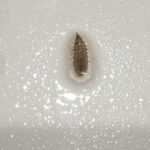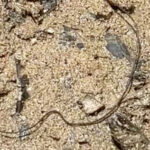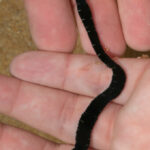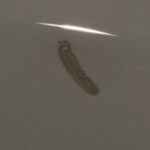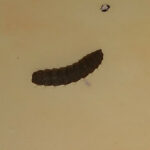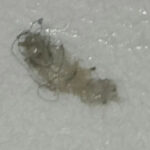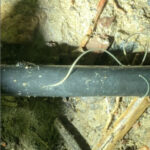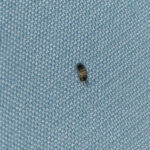
“I found this guy schlepping along a beach in Mexico”, writes this reader about the creature pictured below. “What the heck is it?” Well, we are wondering the same thing. If it weren’t for our reader stating that there was an organism in the photo, we definitely would have missed it. It just looked like a slightly raised portion of sand. For that reason, there is no identifying information in the photo, since we cannot see the actual worm. That said, it does bring to mind some possible identifications.
At first, we thought it could be a sand mason worm. These are marine worms, meaning they live in aquatic habitats, like the ocean. And they are burrowing worms, meaning they dig tunnels through things. In the case of the sand mason worm, that would be the sand. Typically, when people find these on the beach, they are sticking straight up out of the beach, so if this was a sand mason worm, it seems our reader found it in a bit of a pickle. These worms are most typically found in the UK, though they are scattered across the northern hemisphere. They look like tubes of gravel and shells because that is actually what they are, sort of. These guys construct tubes of sand and seashells so that they have something to retreat into when danger is nearby, but also so that they can stay in one place when the sand shifts. They feed on decomposing organic materials, including algae and faeces.
Alternatively, we considered that this may be a flatworm, given its shape. Although it is hard to tell from the photo, which is admittedly quite blurry, the worm does not seem to have the tube shape that is characteristic of sand mason worms, but instead looks somewhat flat. Flatworms are predatory worms. They eat small invertebrates, snails, and other flatworms. There are species that live on land and those that live in water, so if this was a flatworm, it is likely that it is an aquatic one. Flatworms are not dangerous to humans, per se, but they can secrete toxins that might cause pain and/or irritation if they feel threatened. Amazingly, it is these same toxins which they use to hunt their prey. We recommend avoiding physical contact, so as not to disturb the worm, regardless of its species. This is generally good advice when you encounter any unknown organism. But, if this is a flatworm, why does it look like this? Our guess is that, provided it is an aquatic flatworm, it got washed ashore, and the sand and pebbles stuck to its slimy skin.
To conclude, we are not entirely sure what this worm is that our reader found, given the fact that there is no identifying information in the photo except its shape. That said, it could be a sand mason worm or a flatworm, or something else entirely. We hope this helps, and we wish our reader the very best!
All About Worms is always free, always reader-supported. Your tips via CashApp, Venmo, or Paypal are appreciated! Receipts will come from ISIPP Publishing.
You might also find these guys interesting!




